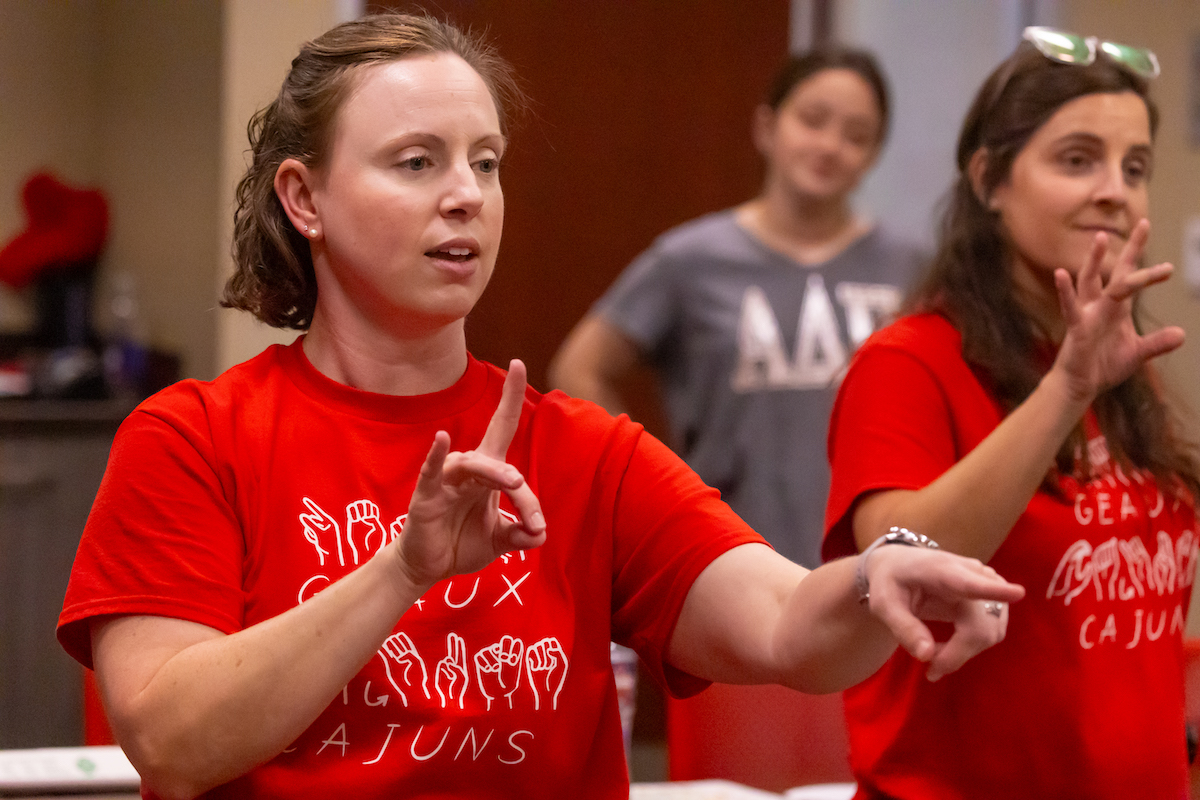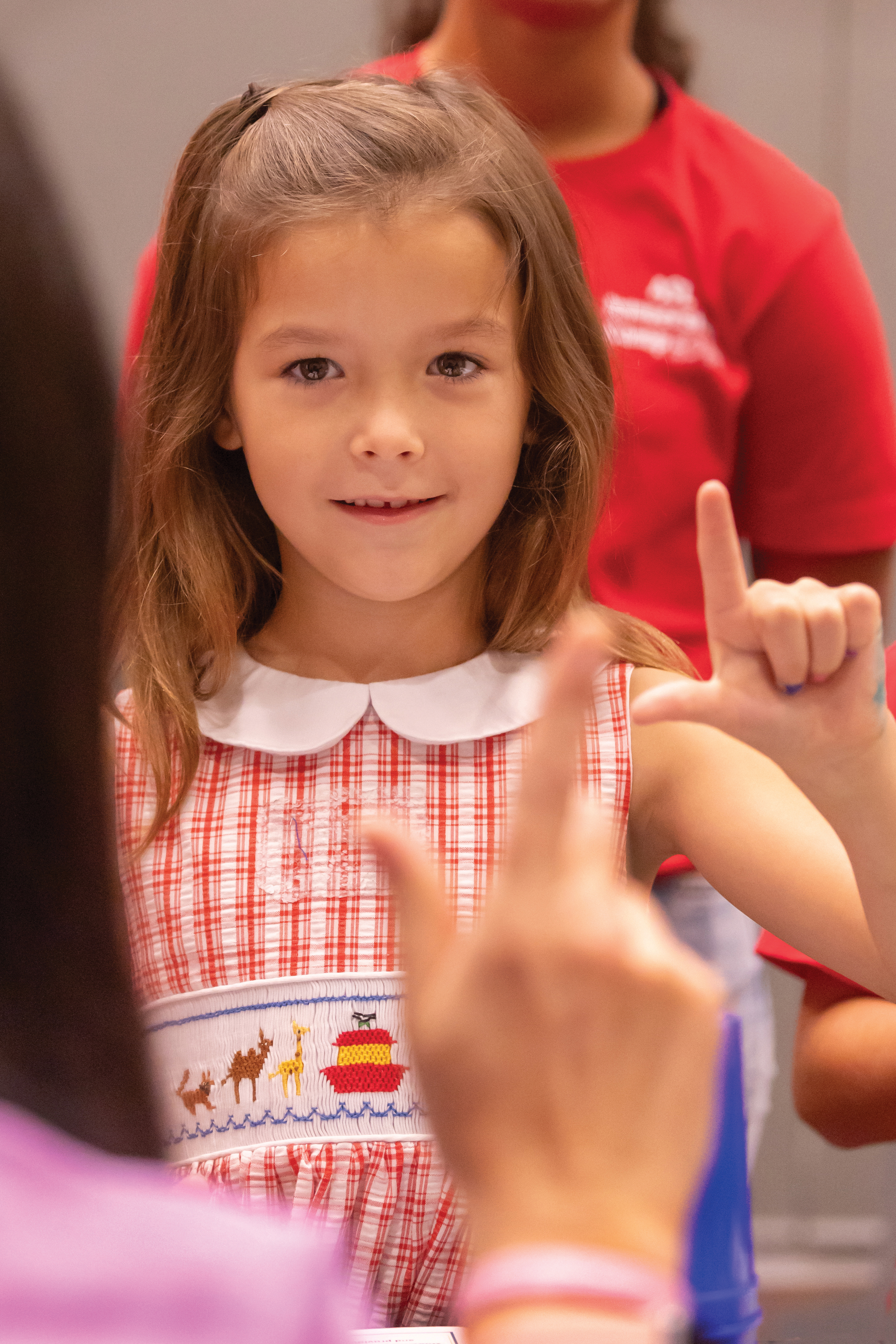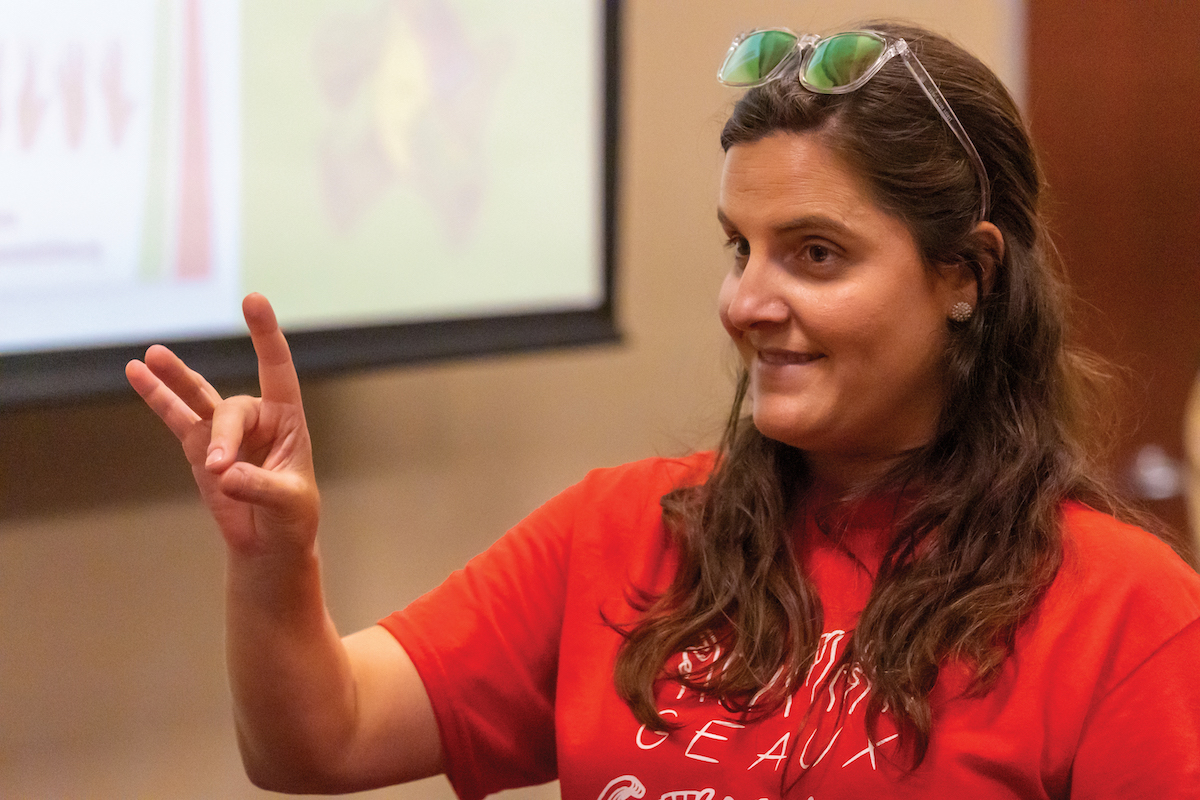A pinkie, index finger and thumb raised in unison means, "I love you."
It's a phrase in American Sign Language almost everyone understands. It's also become a ubiquitous symbol of Ragin' Cajuns pride. The same fingers that represent "ILY" in the ASL alphabet outline the shape of "UL."
Leah Dawsey embodies these overlapping realities. Dawsey grew up as part of a vibrant, multi-generational Deaf community in Lafayette, where many of her friends have Usher Syndrome.
The genetic condition is linked to hearing loss at birth and eventual vision loss. Acadiana has one of the nation's highest concentrations of Usher Syndrome. "People know so much about Cajuns, but they don't realize that there's a subcategory of Cajuns who are here, who are us," Dawsey signed. Dawsey communicates primarily through ASL, and this interview was conducted through her interpreter.
Dawsey earned a bachelor's degree in history from the University of Louisiana at Lafayette and went on to receive her master's degree in Deaf studies from Gallaudet University in Washington, D.C. Now as a full-time instructor in the Department of Communicative Disorders at UL Lafayette, she's teaching and designing new courses to meet a growing demand from students who choose ASL as their modern language requirement. They can't approve the override requests fast enough, said department head Dr. Ryan Nelson. "I think the fact that there are 14 sections and still a waitlist says a lot."
This fall, the department will offer the first ASL minor in the University's history. It comes at a time when ASL is enjoying increased visibility across pop culture: from the film CODA receiving Best Picture and Best Actor honors at the 2021 Academy Awards, to high-profile sign language performances at the Super Bowl, representation on Netflix shows and regularly trending videos across social media platforms like TikTok. "Our whole major is about inclusiveness and diversity and giving voice to the voiceless," said Nelson. "We're creating more opportunities for people to have ways to represent the world."

Katie Potier, a doctoral student in applied language and speech sciences, works alongside Dawsey as a full-time ASL instructor. Sitting in an empty classroom on the second floor of Burke-Hawthorne Hall a few weeks before a new semester begins, the pair emphasized that teaching ASL to a new generation is crucial to preserving Deaf culture and essential for providing equitable language access to a community whose needs often get overlooked.
As a former Deaf education teacher in Texas and Louisiana, Potier said she saw a decline in ASL for multiple reasons, including the misconception that teaching children to sign would prevent them from learning to speak and read in English. However, she has seen the pendulum begin to swing in the opposite direction. Potier said there is now a shift in the field of Deaf education to a bilingual-bicultural teaching philosophy, where ASL is the foundational language of communication. English is taught through writing, like other foreign language immersion programs. She said this approach has gained acceptance.
"The research supports it," said Potier. "So hopefully that keeps going so that we don't have that huge gap in language and literacy skills."

Potier and Dawsey envision their ASL and Deaf studies curriculum becoming a pipeline for future teachers for the Deaf and hard-of-hearing communities. It's also a gateway for training certified interpreters and speech therapists, who can use their ASL fluency to support more inclusive language environments in education and beyond. Dawsey said in her experience, there have never been enough qualified interpreters to meet the demand in the Lafayette area.
"They can be the support for the upcoming Deaf community," signed Dawsey.
Watch: UL Lafayette Launches ASL and Deaf Studies Minor
Photo captions: (from top) Leah Dawsey leads a counting lesson in American Sign Language. / Katie Potier and Leah Dawsey teach ASL during a children's camp. Photo credit: Doug Dugas / University of Louisiana at Lafayette Video credit: Michelle Gomez / University of Louisiana at Lafayette

